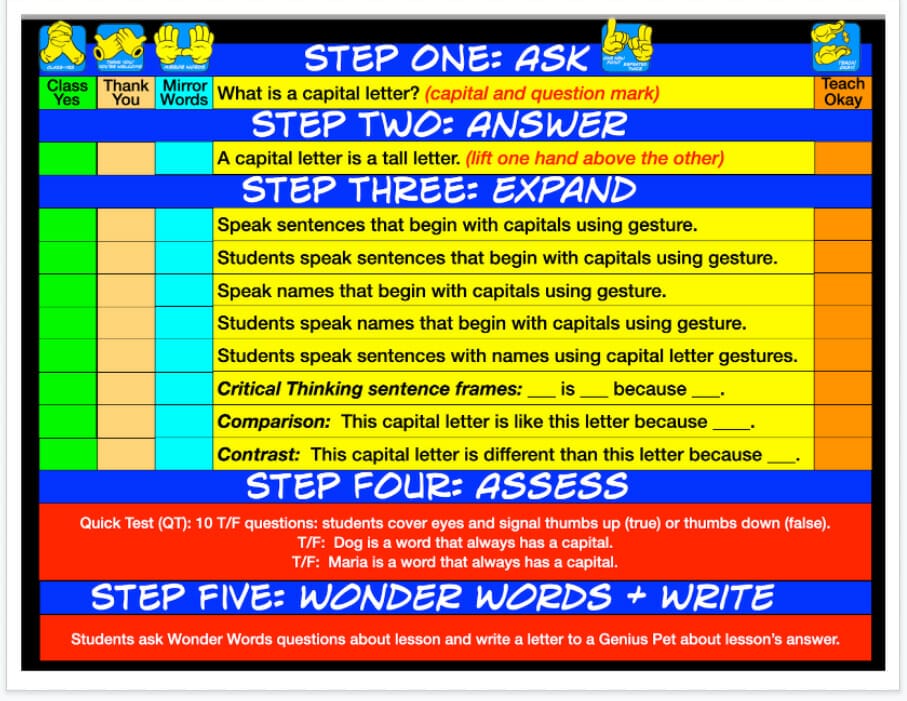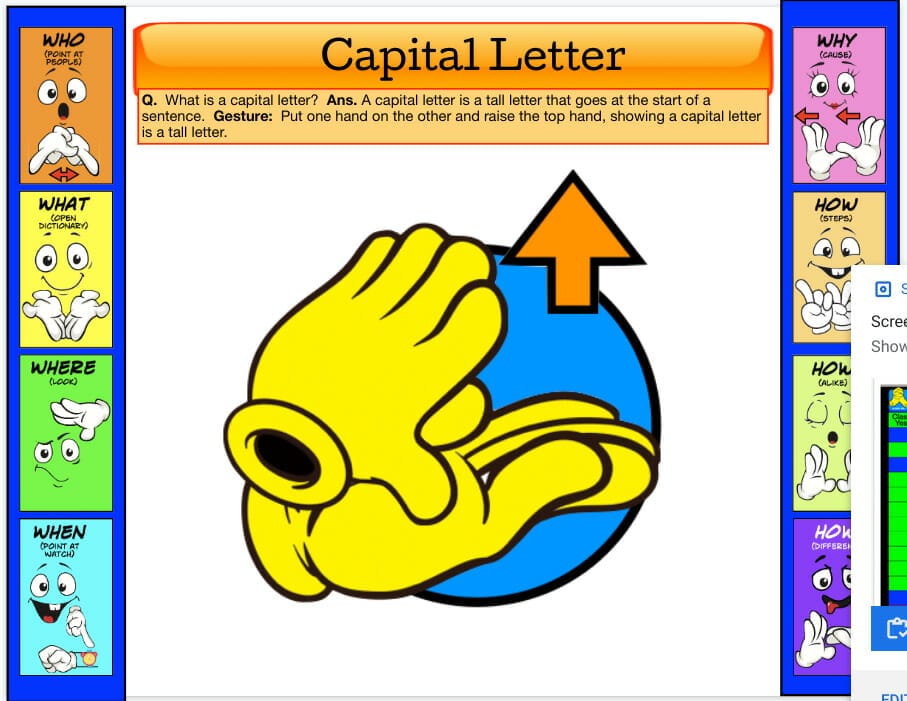Five Step Lesson Plan
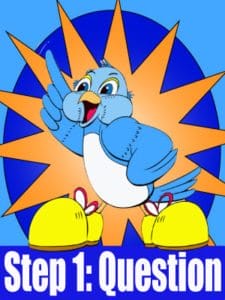
Step 1: Ask a question.
When introducing a new lesson, begin with the question which the lesson will answer. "What is a noun?" "What is an active verb?" "What is a simple sentence?" "What is (book title) about?" "What did we learn about (subject)?" "What are the steps in solving (insert math problem)?" "What are the steps in (experiment name)?"

Step 2: Answer the question.
Give a short, kid-friendly answer to the question. When appropriate the answer should be tied to a memory gesture. "A noun is a person (point to yourself), a place (indicate the classroom), a living thing (tug your ear), or a living thing (tap the desk)." "An active verb shows action (Gesture: churn your arms)." "An adjective changes, modifies, a noun. (Gesture: roll an imaginary ball of clay in your hands, "changing" it.)
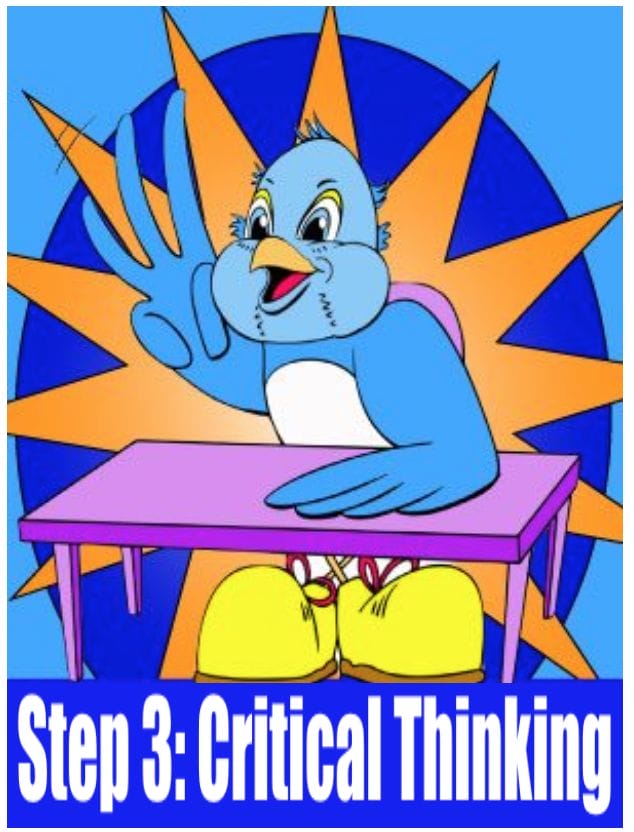
Step 3: Critical Thinking
Expand the answer, finishing with critical thinking tasks.
Start simple and build complexity. Offer one sentence examples of the answer. "A teacher is a noun because a teacher is a person." "I run. Run is an action. Run is an active verb." "Blue bear ... blue is an adjective because blue changes, modifies, bear."
After examples, introduce critical thinking tasks to be completed by students. "Tell your neighbor lots of nouns that are persons." "Take turns with your neighbor filling in this sentence frame for one minute: We active verb." "With your neighbor, fill in this sentence frame over and over: The adjective dog runs."
Step 1, 2, and the first part of Step 3 only take a few minutes. The majority of the lesson, 5-10 minutes or more, should be occupied with critical thinking tasks in the bold part of Step 3.

Step 4: Assess
Quickly assess comprehension using the Quick Test (QT). A QT is a list of True/False statements.
You say, “QT”; your kids respond, “Cutie!” and cover their eyes. Make true/false statements. For example, “A noun is a person, place or action word.” If the answer is true, students silently give a thumbs up gesture. If the answer is false, kids give a thumbs down gesture. If they are uncertain (good information for you!) pupils waggle their thumbs sideways. QT provides a rapid, clear picture of individual student’s understanding ... that doesn't require grading! If 90% of your class score 90% on the test, go on to Step 5. If not, cycle back to Step 3 above and reteach the concept with new examples and critical thinking tasks.
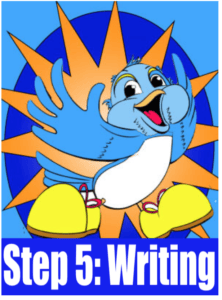
Step 5: Writing
Complete the unit with a summative task. Since every lesson begins with a question, an excellent writing exercise is answering the question (for K-1, assign the following as conversation topics with a neighbor).
- Write a letter to the aliens on Planet Zork explaining the concept.
- Write a letter to your Genius Pet who loves to know what you learned at school.
- Write several sentences that compare and contrast the current concept (for example, noun) with previous concepts (verb, adjective, preposition)
- Use the current concept in as many sentences as possible that contain the word “because."
Use Wonder Words to increase students' abilities to ask and answer deep questions.
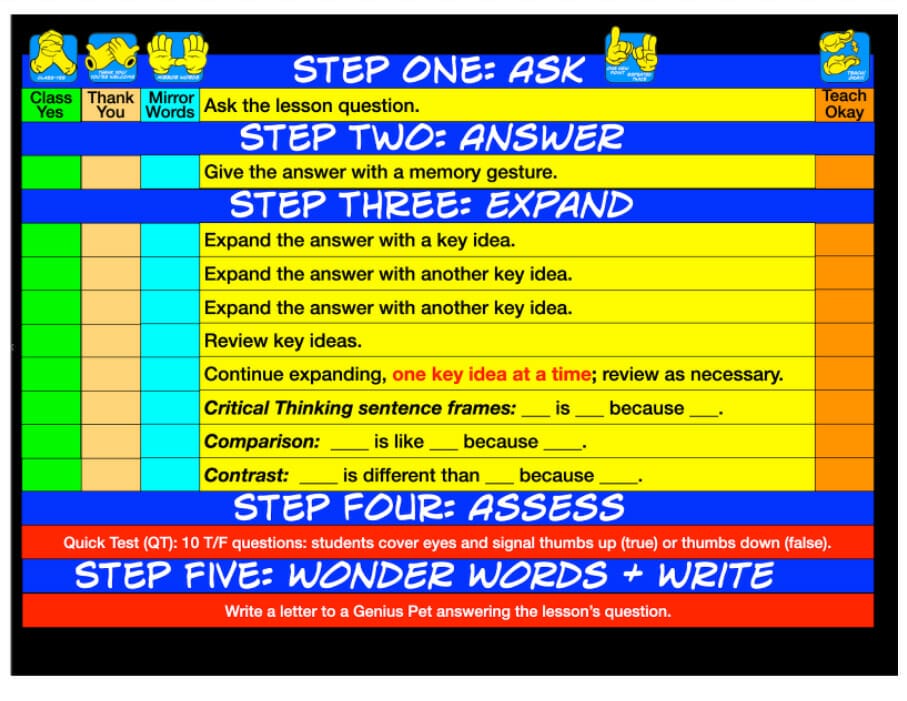
Want to see sample five step lesson using slides?
Using slides is a great way to teach with Whole Brain Teaching as each slide is a cycle through the WBT Basics. Show a slide, call Class Yes, Mirror Words, Teach the slide, do a Teach OK. Then on to the next slide.
For added critical thinking, have the kids teach each other the slide first.The more visual your slides display, the better. We want kids to be seeing, hearing, speaking, moving, and emotionally connect to one new point at a time. Go through the slides at their pace, not yours.
Click to see a sample 8th grade lesson on matter, 6th grade science lesson on observations and inferences and a 4th grade math lesson on place value. As a bonus, you can also see how Triple Whammy Sentences and Brainies are woven into the content.
